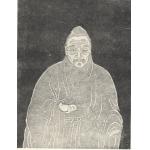
Buddhist Sculpture In Clay: Early Western Himalayan Art, Late 10Th To Early 13Th Centuries
泥塑佛教造像—喜马拉雅艺术
¥ 788 九五品
仅1件
北京朝阳
认证卖家担保交易快速发货售后保障
作者Christian Luczanits
出版社Serindia
出版时间2004
装帧精装
页数353页
上书时间2025-01-04
- 在售商品 暂无
- 平均发货时间 16小时
- 好评率 暂无
- 店主推荐
- 最新上架
商品详情
- 品相描述:九五品
- 商品描述
-
Large-scale clay sculptures representing the main deities are characteristics of the earliest Tibetan Buddhist monuments and particularly of the monasteries and village-temples built -from the end of the 10th to the early 13th centuries in West Tibet and Ladakh. Commonly placed in the main niches along the central axis of the monuments, these images of highest quality constitute a major source for the cultural and religious history of western Himalayan (Indo-Tibetan) art and early Tibetan art in general. Based on extensive field research and in situ documentation for more than a decade, this groundbreaking study provides a comprehensive assessment of the early western Himalayan sculptures and their context.
Western Himalayan clay sculpture is the only preserved sculptures known so far that are built in accordance with the sophisticated sculptural technique described in Indian classical literature. It is closely linked to late Northwest-Indian (Buddhist) art in which otherwise little evidence remains. By surveying the astonishing variety of these sculptures and linking them to contemporaneous painting and other art forms such as woodcarving, this book provides the first comprehensive account of the development of western Himalayan art and its variegated forms of local adaptations.
By tracing the spread and origin of iconographic forms and motifs, this study illuminates the interaction between Indian and Tibetan art when Buddhism was firmly established in the western Himalayas. Finally, it summarizes how the heritage of early western Himalayan art and sculpture has continued. The surveyed monuments include the Tabo Assembly Hall, Ropa, Nako, Lalung, Dungkar as well as the early temples of Alchi, Mangyu and Sumda.
The 323 illustrations—most of them in situ documentation in color as well as archival photography, plans and diagrams—make this intensely cross referenced and indexed book an indispensable source for anyone interested in western Himalayan and early Tibetan art. The stunning quality and distinctive aesthetics of the sculptures, many of them represented on a full page, make it also a visual feast.
— 没有更多了 —
























以下为对购买帮助不大的评价